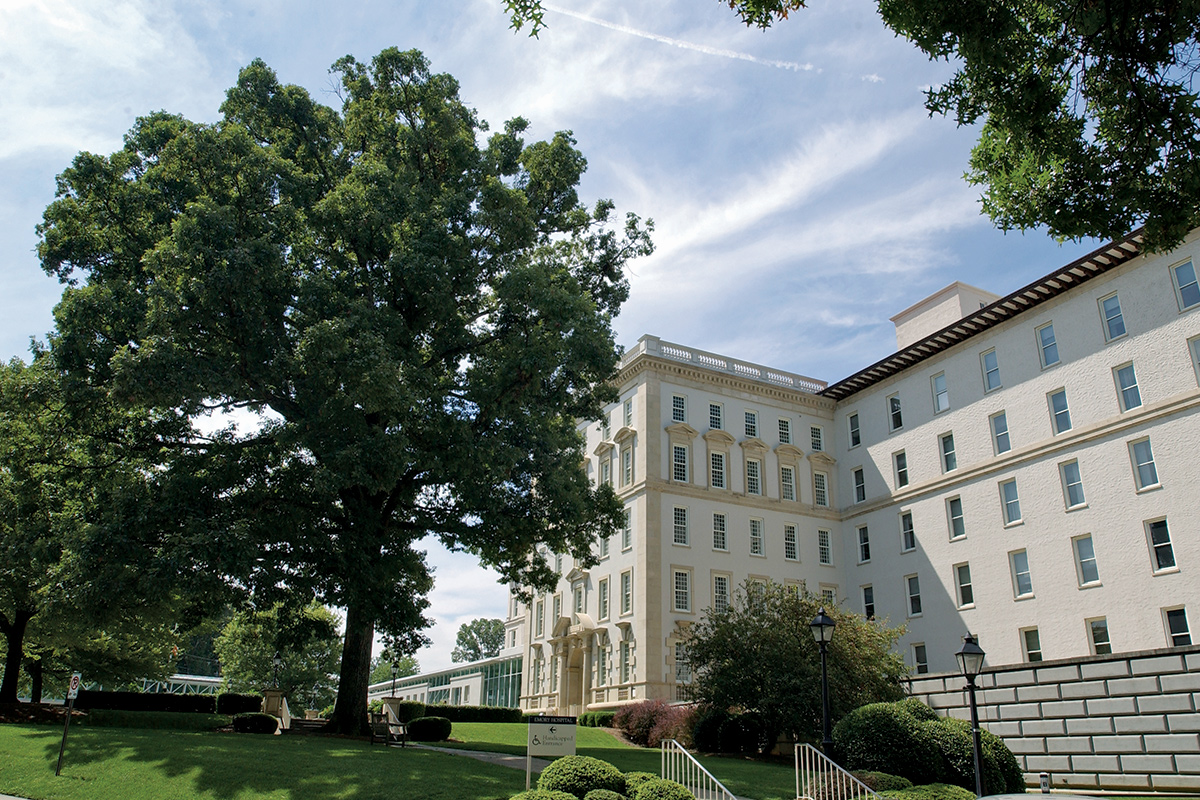The Mighty Oak, II
Canopy policy keeps campus in the shade

Photo by Kay Hinton.
“Old trees like the Calhoun Oak can sometimes stir the imagination—the tree was growing on that spot before Clifton Road was even paved. So it’s poignant when we lose this kind of real, physical connection to an earlier age and its people,” says Vice President and Deputy to the President Gary Hauk 91PhD.
In February, members of the Calhoun family gathered to plant a “new” Calhoun Oak, a transplant from the lawn of Clinic B that was removed for Emory Hospital’s new bed tower. “We are calling it CO2,” quipped Jimmy Powell, director of exterior services.
The original tree became known as the Calhoun Oak after Emory doctor F. Phinizy Calhoun saved it from being cut down in the 1940s.
But trees don’t need to have such a rich history to merit replacement at Emory, since the university adopted a “no net loss of forest canopy” policy in 1999. Every tree taken down during construction has its canopy size calculated, and trees are replanted to replace the canopy loss. This is not a one-for-one replacement, but area for area.
In 2006, an aerial photo was taken of the Emory campus, and the current canopy area was calculated to give a base number. Even with the construction of a new bookstore, two dorms, and other projects, the campus has lost no canopy due to construction. “I believe we have even gained some,” says Powell. Another photo is planned for this fall.
As for the old Calhoun Oak, some pieces suitable for wood turning were saved and are being kiln dried.








